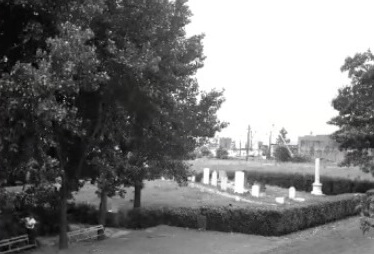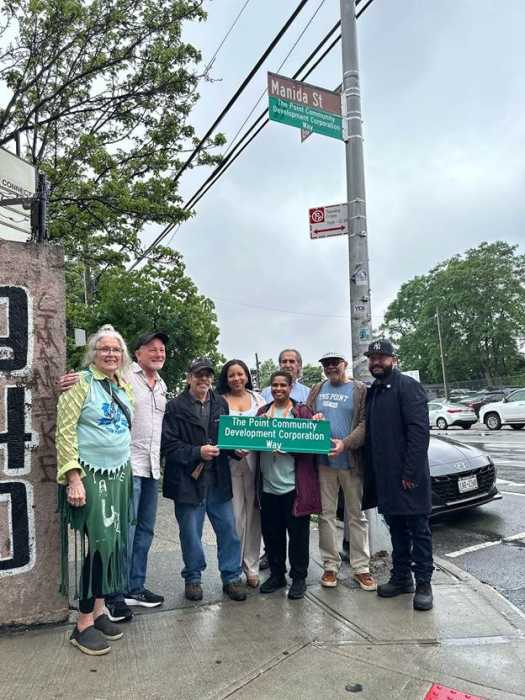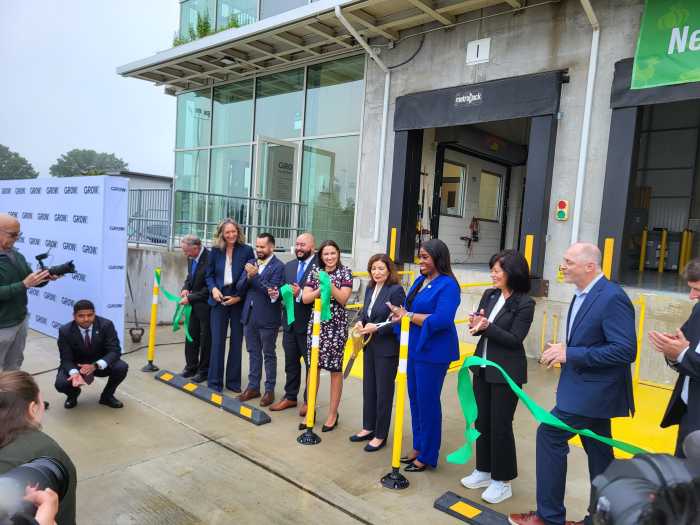The New York City Landmarks Preservation Commission (LPC) on Dec. 12 voted unanimously to add a Hunts Point park to its roster of individual landmarks.
The Joseph Rodman Drake Park & Enslaved African Burial Ground, originally named after American poet Joseph Rodman Drake, opened in 1910. But later through radar surveying, researchers realized that the park is actually the site of two colonial-era cemeteries dating back to the early 1700s, containing undocumented grave sites of African and Indigenous slaves. In 2021, the park was renamed to memorialize the people buried there.
“The survival of this historical arrangement within a New York City public park is remarkable,” Michael Caratzas, an architectural historian with the LPC, said before the vote.
A lot of the research has been done by members of the Hunts Point Slave Burial Ground Project — an initiative that looks to provide historical reference about the origins of the park through research and education.
“The history of the enslaved people buried in the Joseph Rodman Drake Park & Enslaved African Burial Ground still impacts our lives today, here in the Bronx, and beyond,” said Justin Czarka, a PS48 educator and Hunts Point Slave Burial Ground Project co-founder. “This is one step toward writing the forgotten back into our collective story. We will continue to advocate for improved protection, site interpretation and a permanent memorial for those buried here.”
The proposed designation was on the table back in August, when the commission considered both the park and the Old Croton Aqueduct Trail for landmark status — the aqueduct being considered for the Bronx’s first scenic landmark. According to the LPC, the park now joins other recent landmark designations including the Bronx Opera House, Fire Alarm Telegraph Bureau, Bronx Central Office, Engine Company 88 and the Samuel Gompers Industrial High School.
Apart from the unanimous decision by the commission to grant individual landmark status to the Joseph Rodman Drake Park & Enslaved African Burial Ground, Caratzas said six people spoke in favor of the designation at the body’s Nov. 14 hearing and 71 others submitted written statements in support.
Bronx Borough President Vanessa Gibson and Bronx Council Member Rafael Salamanca also commended the LPC for its vote.
“The landmarking of the Enslaved People’s Burial Ground located within Drake Park commemorates the enslaved African and Indigenous people who were central to the area’s early history and reflects the complex and often painful history of Hunts Point,” Gibson said.
“At what was previously known as Joseph Rodman Drake Park in my district, critical research uncovered the true story of the region’s complicated history of enslavement of African and Indigenous people,” Salamanca added. “Today, we are taking the next step in forever recognizing our true history.”
Reach Camille Botello at cbotello@schnepsmedia.com. For more coverage, follow us on Twitter, Facebook and Instagram @bronxtimes























